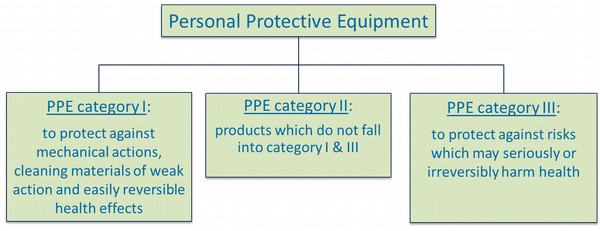Legislative framework

The purpose of the Biocidal Product Regulation (BPR) is to improve free movement of BPs within the EU while ensuring a high level of protection of human health, animal health and the environment.
Protection of human health involves (a) safety at the workplace, and (b) consumer protection. Particular attention should be paid to vulnerable groups. These include pregnant and nursing women, the unborn, infants and children, the elderly and, when subject to high exposure to biocidal products over the long term, workers and residents.
How is high level of human health protection achieved?
- Precautionary Principle
- Sustainable use of biocidal product application
Safety at the workplace

1. Safety in pest control operations
STEP-BY-STEP GUIDE- Notify consumers and persons in specific areas such as schools, workplaces, kindergardens, public spaces, geriatric care centres or in the vicinity of surface water or groundwater about planned BP applications
- Consider BP label for application rate, type & procedure of application, personal protective equipment, risks on human/animal health and the environment, precautionary measures etc
- Follow specific measures for maintenance of application equipment and PPE
- Follow specific measures to prevent BP spills & accidents during application
Specific measures should be taken to ensure the protection of vulnerable groups.

What is Personal Protective Equipment (PPE)?
PPE is any device or appliance designed to be worn or held by an individual for protection against one or more health and safety hazards.
The different categories of PPE are defined in Directive 89/686/EEC. PPE Category III is considered appropriate for use in pest control activities. However, the specific technical properties and the performance of each PPE are given in CEN (European Committee for Standardisation) and ISO (International Organisation for Standardisation) standards.
Additional levels of protection may be offered by the use of gloves, dust/mist/vapour masks, rubber boots, face shields, hats, apron etc. as recommended by the BP label and SDS. Proper use and maintenance of PPE is essential to maximize the level of protection as indicated by the manufacturer.
Other considerations to minimize human health risks from pest control operations may include:
- Methods to repair, maintain, and clean application equipment
- Measures to prevent BP spills & accidents during application and methods to clean up BP leaks and spills
- Specific instructions for re-entry to treated areas
- Measures to reduce BP residues on different surfaces
- BP odour as an indirect protective measure against human (worker and bystander/resident) and animal exposure
- BP application and dilution rates
Overexposure to applied BP is not anticipated when professional practices are followed in pest control operations!!!
However, in the event of an accident emergency actions should be taken, such as:
- Follow general first-aid procedures for humans and animals
- Contact the National Poisons Unit
- Contact the fire brigade in the event of fire
- Provide specific instructions to the physician/hospital/poisons unit and the fire brigade as required and in line with the BP label and SDS
Safety at the workplace

2. Safe working practices for storing, transporting, handling and mixing BP
Specific procedures for storing, transporting, handling and mixing BPs should be followed as indicated in the BP label and SDS.
As general measures, BPs should be kept locked up and out of reach of children, in specific locations with the emergency phone numbers handy.
The spray mixture should be prepared at the application site so as to avoid transporting on public roads.
Safe transporting of BPs is governed by legislation and general rules on transport of hazardous goods by road.
What are the specific procedures for safe storage of BPs?
Safety at the workplace

3. Safe disposal of empty packaging
Wastes are materials that come into contact with the product as commercially available or with the diluted formulation, e.g.
- washings of spraying equipment,
- PPE (eg plastic gloves, coveralls, etc.)
- BP containers
Experience from pesticides for managing empty containers (FAO / WHO Guidelines on Management Options for Empty Pesticide Containers, 2008)
- Read the Label
- Clean empty containers
- Let the empty containers drain & dry
- Puncture or crash the container to prevent re-use
- Dispose at the place of use for recycling
Useful links
- REGULATION (EU) No 528/2012 OF THE EUROPEAN PARLIAMENT AND OF THE COUNCIL of 22 May 2012 concerning the making available on the market and use of biocidal products (Text with EEA relevance) Download
- COUNCIL DIRECTIVE of 21 December 1989 on the approximation of the laws of the Member States relating to personal protective equipment (89/686/EEC) (OJ L 399, 30.12.1989, p. 18) Download
- REGULATION (EC) No 1272/2008 OF THE EUROPEAN PARLIAMENT AND OF THE COUNCIL of 16 December 2008 on classification, labelling and packaging of substances and mixtures, amending and repealing Directives 67/548/EEC and 1999/45/EC, and amending Regulation (EC) No 1907/2006 (Text with EEA relevance)Download
- Guidelines on Management Options for Empty Pesticide ContainersDownload


